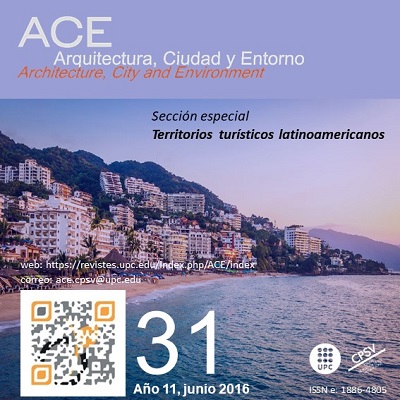The management of tourist territories in Latin America
DOI:
https://doi.org/10.5821/ace.11.31.4788Keywords:
Land management, tourism, American continentAbstract
Tourism is one of the branches of the economy that has more increase over the last 60 years. In 2014 tourism revenue in 20 countries and major destinations in the world were equivalent to 1,245,000 million, being the American continent which what observed the highest relative growth with 8%. In this context of economic success the central question is if tourism can be a tool to help emerging countries to eliminate poverty or whether it is a new form of imperialism.
Therefore, in this section are presented three visions about the tourism phenomenon and its relationship with the inhabitants of the territories under it.
In the first instance, Manuel Martin Hernandez describes the process of developing the Integral Plan for Antigua Guatemala, which in 1979 was honoured as a World Heritage Site by UNESCO and is one of the first living cities with this recognition, faced particular challenges for management, from the tourist perspective.
Later, Jorge Gama Chavoya delivers a vision of the tourist areas of sun and beach, through the case of the touristic Metropolitan Area of Puerto Vallarta - Banderas Bay, analysing the transformation of public space and its impact on the identity of the residents.
Finally, Adolfo Narváez Tijerina has a particular reflection in which establishes a relationship between horror films and cultural conceptions about the undesirable. Make this presentation by the way of a theatrical story, through a careful selection of films that show the Pop culture and its relationship with the territory, mainly suburban and gated communities.
Downloads
Published
Issue
Section
License
| INTELECTUAL PROTECTION CRITERIA |
At this moment, it is count with the "Oficina Española de Patentes y Marcas", while global protection it is being processed by the World Intelectual Property Organization (OMPI/WIPO). Nevertheless the International Standard Serial Number Office (ISSN) has given the following numbers ISSN: 1886-4805 (electronic version) and 1887-7052 (paper version). All articles will be peer reviewed, using double blind reviewing. |
| COPYRIGHT |
The article contents and their comments are authors exclusive liability, and do not reflect necessarily the journal editor commitee's opinion. All ACE published works are subject to the following licence CC BY-NC-ND 3.0 ES http://creativecommons.org/licenses/by-nc-nd/3.0/es/ It implies that authors do not hold nor retain the copyright without restrictions but only those included in the licence. |





































